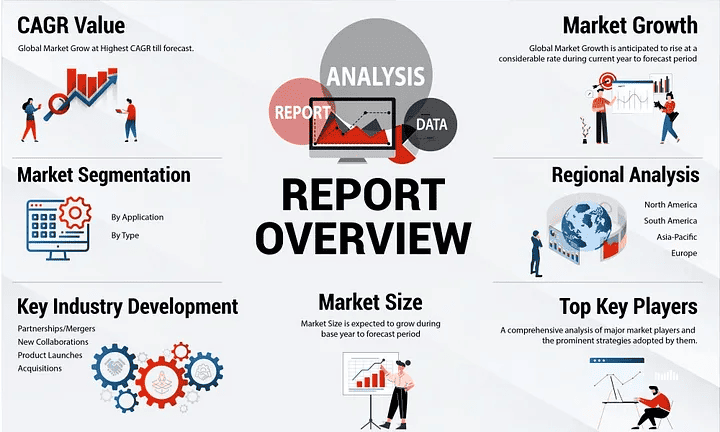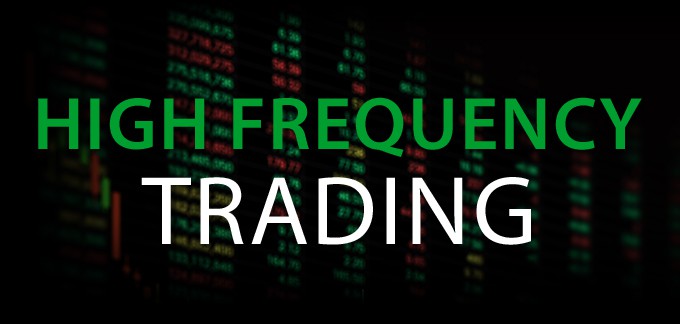Track crypto exchange trading volume—it’s your secret weapon to understanding the whys behind market upswings and downturns. As the markets bob and weave through peaks and valleys, volume data is your reliable guide through this wild terrain. It’s simple–where there’s volume, there’s action. In the maze of coin trades and price shifts, spotting where the real money flows is key to staying ahead. I’m here to show you how volume isn’t just a number, but a narrative of the market’s true tale. From steering clear of deceptive wash trading to grasping the pulse of liquidity’s ebb and flow, you’ll learn to sniff out the facts from fakes, soaring above the average Joe. Get ready to magnify your market moves, as I take you through the vital art of volume tracking.
Understanding the Importance of Trading Volume in Cryptocurrency Markets
Deciphering the Significance of Volume in Trading Strategies
Why does trading volume matter? High volume means more activity. Market moves rely on this. Volume shows how many coins change hands. It’s a clue to market health. Use volume tracking tools to watch this. They help you see what’s hot, what’s not.
Think of volume like a heartbeat. Steady and strong suggests life; weak and erratic warns trouble. Seeing big volume spikes? Check the news. Maybe a coin just got a big nod, or bad press. Either way, volume changes are your sign to dig deeper.
Spot market volume gives a clear picture for coins like Bitcoin. Derivative market volume hints at future bets. Both are key for full market view.
Distinguishing High Liquidity from Wash Trading Activities
Liquidity means easy buying and selling. You want that in a market. But not all busy markets are good. Some have fake volume, called wash trading. That’s like a store claiming loads of customers, but it’s just the staff walking in and out.
How to spot wash trading? Look for weird patterns. Same size trades, same time, over and over—that’s fishy. Real liquidity has random, human messiness.
Strictly speaking, real-time trading data and analysis tools help you track crypto exchange volume and sniff out wash trading. They let you compare different exchanges, see the flows. Liquidity indicators in crypto give you the facts. They tell you if you can trust the volume you see.
In a trustworthy market, trade volume analytics are gold. They guide your moves. In markets with wash trading, they’re traps. So know how to tell the difference.
Always remember, good volume analysis techniques are like expert detectives. They point out the truths in complex data. Using volume indicators explained right, you grasp your trading edge.
Keep an eye on top exchanges by volume. They’re often safer bets. But, never let your guard down. Low volume trading risks are real. They can mean hard exits.
In the end, it’s all about using volume data sources in crypto smartly. High-frequency trading effects might pump volume short-term. Exchange liquidity assessment helps you see past that. It tells you if the market can handle your trades without blinking.
Mark my words: the importance of volume in crypto can’t be overstressed. It’s the pulse we all watch. It moves prices, defines market capitalization, and flags the illiquid markets. For the trained eye, volume speaks volumes.
Leveraging Tools for Advanced Volume Tracking and Analysis
Utilizing Real-time Trading Data and Volume Indicators
When you hear “real-time trading data,” think of it as a live feed of cryptocurrency trading volume. It tells you how much of a coin gets traded, right now. This matters because volume moves markets. More volume can mean a price jump or drop is coming. Let’s get you comfy with the term “volume indicators.” These are tools that savvy traders use for a sneak peek into market moves.
You might wonder, “What makes volume indicators so special?” They show you the heartbeat of the market. High volume means a lot of action. Low volume might mean it’s time to wait and see. Learning to track crypto exchange volume keeps you in the know. Say, Bitcoin starts buzzing with trades. It might be about to soar or dip.
Volume tracking tools are like having superpowers. They let you see hidden patterns in trading pairs volume. For example, if Ethereum versus US Dollar has a volume spike, traders are either cashing in or buying up big time. And that’s your cue to act.
Comparing Exchange Volume Metrics to Identify Market Trends
Now, I want you to think like a crypto detective. You’ve got a case to crack: what’s the mood in the crypto street? You take your magnifying glass to exchange volume comparison. Here’s the skinny: some exchanges move more coins than others. Knowing which are the top exchanges by volume can lead you to smart trades.
How does one compare exchange volume metrics, you ask? You dive into the numbers, see where the action is. If Ripple’s getting a lot of love on Binance but not on Coinbase, that’s a clue. Maybe Binance traders know something you don’t. Or it could be buzz over a fresh update or partnership.
Trade volume analytics isn’t just fancy math. It’s real clues about real money on the move. Liquidity indicators crypto traders love can show you if a market’s easy to jump in and out of. No one likes their cash stuck in a slow game. Analyzing market depth gives you an x-ray view of supply and demand.
Remember, “market liquidity” is how fast you can sell without the price dropping. You love that in a market. It’s like being able to leave a party whenever you want. With high liquidity, you trade fast; with low liquidity, you might get caught in a price swing.
Volume analysis techniques take patience, but they pay off. Track crypto volume monitoring like it’s your business. Because, well, it is. Volume spikes crypto traders get giddy about? They’re your signal. They say, “Hey, look here, something’s up.” Could be a whale swooping in, or news stirring the pot.
From bitcoin volume tracking to altcoin trading activity, volume trends cryptocurrency experts eye can be goldmines. Volume tells a story, one where you can end up the hero, or learn for the next chapter.
So, dust off your volume indicators and start your detective work. The market’s buzzing, and the clues are there in the volume. Keep your eyes wide; the next trade could be your best if you’re reading the volume right.
Assessing Trading Volume Across Different Market Types
Analyzing Volume Fluctuations in Spot and Derivative Markets
When you track crypto exchange volume, you’re on the lookout for big moves. The spot market is where cryptos like Bitcoin and altcoins trade for immediate delivery. It’s the real-deal heartbeat of the crypto world. The volume here can show how many people are buying and selling right now.
Derivative markets are different. They trade contracts that bet on future crypto prices. These can be futures, options, or swaps. They’re like promises to buy or sell crypto at a set price later on.
Volume in these markets can skyrocket from things like news events or trader sentiment. Big changes, or volume spikes, can tell us that a price shift might be coming. Tracking these spikes gives us a heads-up. But, volume alone doesn’t always show the full story.
Investigating the Implications of Volume Spikes and Market Depth
High volume means a lot of trading. But why does this matter? It’s about liquidity – that’s how easy it is to buy or sell without affecting the price too much. If there’s high liquidity, you can trade large amounts smoothly.
A volume spike can be a sign of strong interest in a coin or a sign that traders know something you don’t. Maybe there’s a rumor about a big update or a partnership.
Market depth is part of this puzzle. It’s a snapshot of the order book, showing buy and sell orders at different prices. You can see how many coins you can trade without the price moving too much. This tells you about the market’s health and stability.
By analyzing market depth, you can better understand the potential impact of your trades. You don’t want to move the market by accident unless you’re trading really big bucks.
We also have to think about. This is when super-fast computers make heaps of trades in seconds. They can cause volume spikes, too. They sometimes shake things up, making the market more volatile.
Knowing the game – like HFT tricks or spotting true liquidity versus fake wash trades – can keep your trading sharp. Volume tracking tools, like charts and scanner apps, help you see the market’s true color. Real-time live data gives you the confidence to make moves or sit tight.
If you’re going to win at this, knowing the ins and outs of volume is key. It can show you the market’s mood, warn you about big waves coming, and help you find the right time to jump in or out. It’s like having superpowers if you use them right.
So, keep your eyes on the volume, and let the ebb and flow of the market guide you. Just remember, if you’re not watching the volume, someone else is – and they might just get the jump on you.
Applying Volume Data to Enhance Trading Decisions
Integrating Insights from Volume Analysis Techniques
When we trade crypto, we must look at volume. It’s like our secret insight. Picture it as the loudness of trading—it tells us how much buzz a crypto has. By analyzing market depth, we get to see under the skin of the market. We start to understand where the money moves.
Volume tracking tools are our best friends here. They catch volume spikes that can warn us of big price jumps. Let’s use Bitcoin as an example. When lots of folks buy or sell, the trade volume goes up. If we see a sudden spike in Bitcoin volume, we should get ready. It can mean a price change is coming.
But it’s not just about spikes. By looking at the steady flow of trade volume analytics, we can see trends. These trends show us which coins are getting more interest over time. For altcoin trading activity, this could hint at which ones might grow a lot.
And tools are great, but real-time trading data? That’s where we strike gold. It lets us act fast, right when the market moves. This can lead to smart moves that others might miss.
Recognizing the Impact of Trading Volume on Market Movements
Trading volume can make or break our trades. Low volume can mean risky trades—it’s like a ghost town where prices can swing wildly if someone just shouts loud enough. But high volume, that’s when things get interesting. It shows us that the crypto is getting more attention, which can lead to stable price moves.
Take wash trading, for example. It’s like fake applause, and it tricks us into thinking there’s more action than there really is. But we’re smarter. We use volume analysis techniques to spot the real deals from the fake noise.
Market liquidity indicators are a treasure map. They tell us where the market is deep with trades and safe to dive into. Exchange volume comparison is like looking at different crowded beaches to pick the best spot to surf the waves of trades.
We don’t want to miss the big waves. That’s why volume significance in trading is a big deal. Volume data tells us not just who is buying or selling, but the story behind the move. And when we know the story, we make better choices.
In crypto, it’s risky not to know your stuff about volume. So, we keep our eyes on volume indicators, volume trends cryptocurrency, and live order books. This gives us the edge to be one of the first to see market moves.
Just remember, more volume often means a healthier market. It’s where we want to trade. By mastering volume data sources crypto and understanding the importance of volume in crypto, we navigate the markets like pros. We turn volume’s whispers and shouts into smart trading decisions. That’s how we stay ahead of the game.
In our deep dive into trading volume, we’ve learned how crucial it is in crypto markets. From spotting real trades to seeing through fake ones, volume tells a big story. We’ve also looked at how tools can track and break down this info in real time. Knowing the differences in volume between spot and derivative markets can guide us. Using volume data, we can make smarter trade choices and catch market shifts.
Remember, volume is a trader’s best friend. It’s the pulse of the market. When you get it, you trade smarter. That’s the key takeaway. Every spike, every dip has a message. Listen to it, use it, and trade with confidence. Stay sharp out there and let the volume lead the way!
Q&A :
How do I track trading volume on crypto exchanges?
Tracking trading volume on crypto exchanges involves monitoring the amount of a particular cryptocurrency that has been traded within a set period of time. This can be done through the exchange’s own website or through various cryptocurrency market data platforms like CoinMarketCap, CoinGecko, or CryptoCompare. These sites provide real-time volume data and often include tools to help analyze market trends.
What is the significance of trading volume in cryptocurrency exchanges?
The significance of trading volume in cryptocurrency exchanges lies in its ability to indicate the liquidity and activity level of a particular coin or token. High trading volumes often suggest a healthy and competitive market with a high number of buyers and sellers, which can lead to less price volatility. Conversely, low volume might indicate less interest or potential problems with the asset.
Where can I find real-time data on crypto exchange trading volume?
Real-time data on crypto exchange trading volume can be sourced from financial news websites, cryptocurrency data aggregators, and the exchanges themselves. Some popular aggregators that provide comprehensive volume data include CoinMarketCap, CoinGecko, and CryptoCompare. These platforms offer detailed analyses, charts, and the option to set up alerts on volume changes.
How does trading volume affect cryptocurrency prices?
Trading volume affects cryptocurrency prices through supply and demand dynamics. A high trading volume indicates active interest and can drive prices up, especially if the market perceives the buying activity as a signal of value. Conversely, large sell volumes can cause prices to plummet. Additionally, high volumes can mean tighter spreads between the bid and ask prices, thus potentially leading to more accurate market prices.
Can I use trading volume to predict crypto exchange market movements?
While high trading volume can be an indicator of market strength and trader interest, it is not a foolproof method for predicting market movements. Volume should be considered alongside other factors such as market news, overall trader sentiment, technical analysis, and historical price trends. Experienced traders often combine multiple indicators to assess potential future market movements more accurately.



